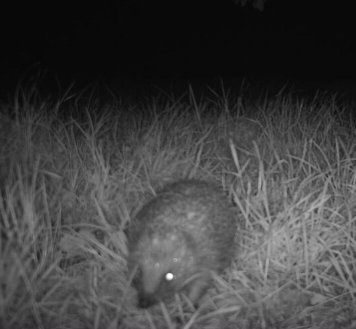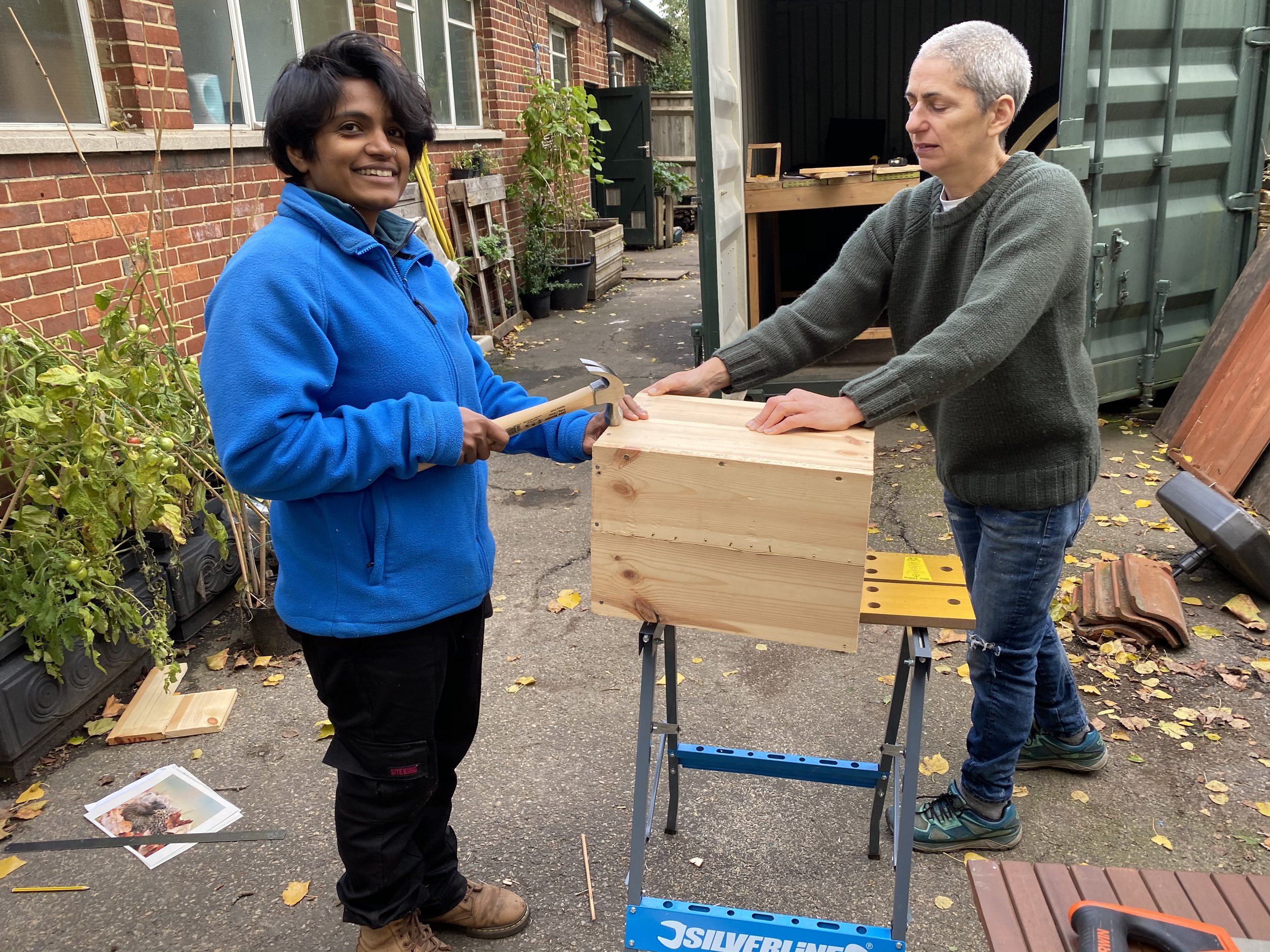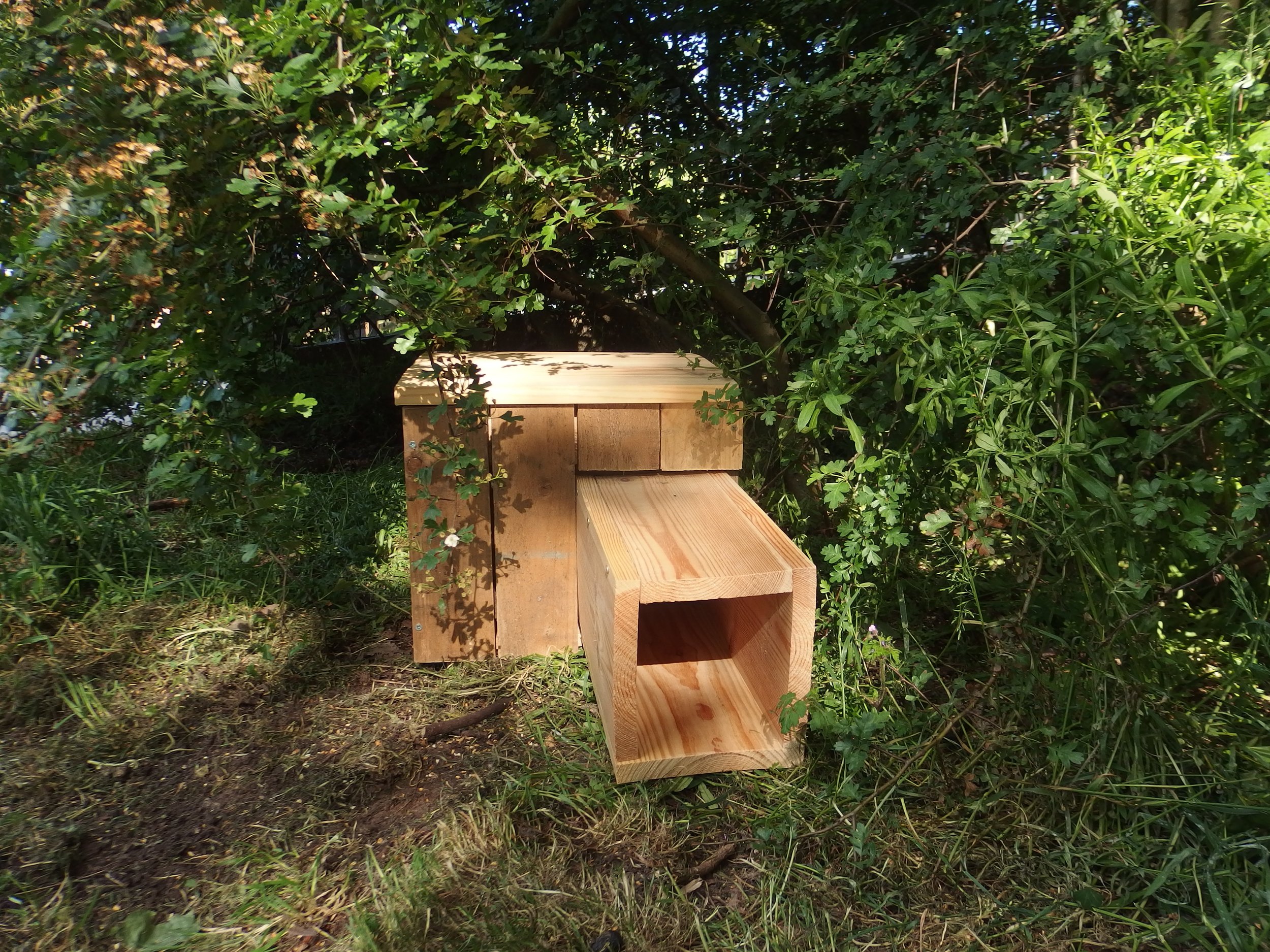Hedgehogs on Hampstead Heath
Hedgehogs are a key species on Hampstead Heath that we aim to conserve year-round. We’ve recently started work on a new hedgehog recording project with our partners at London Hogwatch, so thought we’d bring you more information on our prickly residents and how you can help them.
If you live in the Camden area, do help us by recording your hedgehog sightings (or lack of them) to help build a picture of where they are roaming in the area. Information from this citizen science survey will help to target routes to create hedgehog habitat corridors. You can get involved in the project here. Read on for more information about these wonderful animals and how we’re helping them survive on Hampstead Heath.
Hedgehog found during a torchlight survey on Hampstead Heath
About hedgehogs
The European hedgehog Erinaceus europaeus is one of Britain’s most recognisable and cherished animals, being voted the UK’s Favourite Mammal in 2016. Hedgehogs are nocturnal foragers. We know them as gardeners’ friends, munching pesky slugs, snails, grubs and caterpillars, as well as other invertebrates like beetles, earwigs, woodlice and worms. They will also eat roots, berries and mushrooms.
It is especially important that hedgehogs fatten up for winter, since they are true hibernators. From October, they will seek out snug places to make a winter nest, such as leaf piles, compost heaps, rotting logs, brush piles and of course specially-made hedgehog boxes. Always move your wood stacks on bonfire night! They emerge in March and April.
Hedgehogs can be found in a variety of habitats, including parks and gardens. They can roam 2 kilometres in one night, so need connected corridors of habitat. During the day, they rest in sheltered places like rabbit burrows, log piles and dense vegetation.
Rolling downhill
Although legally protected, hedgehogs have sadly steeply declined in recent decades. Surveys indicate half of them have been lost from the wider countryside and a third from towns and cities in the past 20 years, leaving fewer than one million left in the UK. Likely threats include pesticide use reducing their prey, roadkill and the loss of habitat to development, changing farming practices and tidier gardens. Habitat connectivity is also important, with fencing, walls and roads blocking the hedgehog’s roaming lifestyle. An account of London’s hedgehogs in 1974 noted them as ‘very abundant in the outer suburbs’, but few populations remain in London.
Hedgehogs on the Heath
Fortunately, Hampstead Heath is home to London’s largest hedgehog population, as recorded in surveys by the Zoological Society of London’s ‘London Hogwatch Project’, which Heath Hands volunteers helped to carry out in 2017 and 2021. The earlier survey estimated there are 100 hedgehogs on the Heath. You can find out more about our hedgehog surveys here.
The size of the Heath, and the way it is managed with rough grassland, bramble thickets and dense hedgerows are likely factors that make it good for hedgehogs. We have also put out over 20 home-made hedgehog boxes on the Heath as part of our ‘Adopt a Wildlife Home’ sponsorship. You can help by adopting a hedgehog box. We even have some hedgehog bags for sale in our online shop to show you’re supporting our work to save them.
Helping Hedgehogs
It is easy to help hedgehogs on your patch. Cut a ‘hedgehog highway’ in fences, create log piles or install a hedgehog house for shelter, leave a rough area for foraging and avoid using harmful pesticides. Fresh water is important for hedgehogs in summer and if you want to feed them, provide special hedgehog biscuits or wet cat food (never bread and milk which can sicken them).
The Hedgehog Street website has lots of information on caring for hedgehogs in your garden and recording them country-wide. Don’t forget you can record hedgehogs local to the Heath on the new Citizen Science project . Gardens can be a lifeline for hedgehogs and together we can ensure a future in the UK for this iconic mammal.





